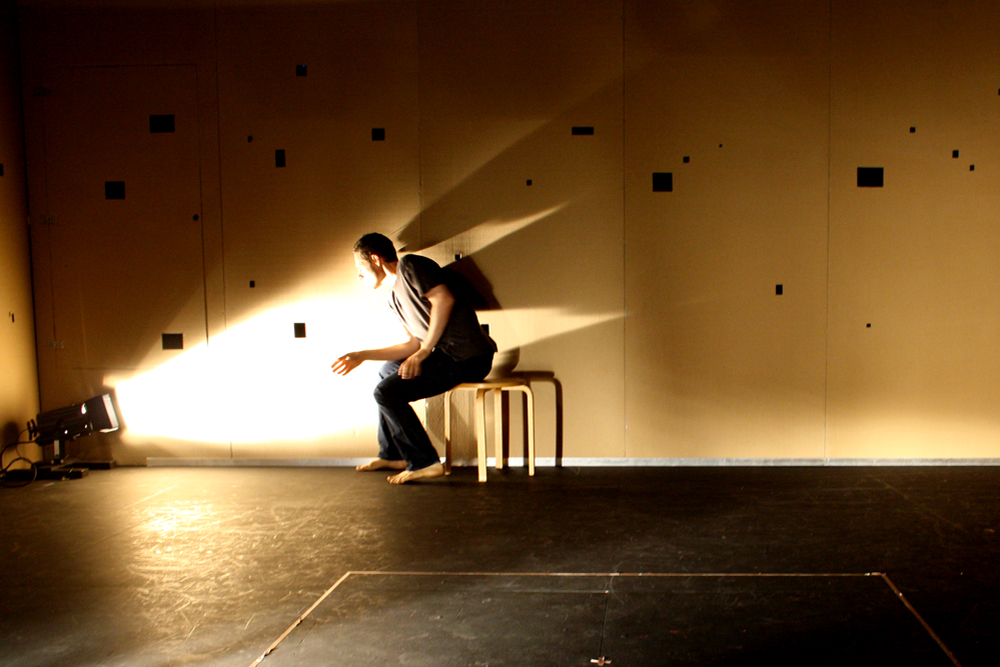
| CLARE DYSON PERFORMANCE | |||||
| current | dance | installation | touring | research | about |
 |
|||||
|
||||
| the
voyeur watching from a distance without being seen |
||||
|
people dont change, they
just reveal themselves |
||||
|
|
Inside a large box onstage are two dancers. The box is littered with peepholes – enough for each audience member to see through. Some are large enough to share, but most are for individual watching. Some have steps, some seats and many are at head height. Some of these ‘peep holes’ also have headphones, and some binoculars.
The audience is invited onstage to watch this performance, but how they watch is central to the work. Do they want to develop an intimate relationship with the performer? Do they want to hear the intimacies that are revealed on the headphones? Or do they want more visual information – to use the binoculars to see extremely close, things that are usually seen from a distance? Each set of headphones has text – revealing text – one about each dancer. Revelations and vulnerabilities. Most in English, but some in other languages: Mandarin, Indonesian, Spanish or French depending on the demographic of each performance space, so the choice can be closer to what you desire. Each viewpoint has an advantage and a disadvantage: you might be able to see everything, but that position has no headphones. You might have binoculars but you are a long way from the action. And so the audience move, exchange headphones, choose to watch through binoculars and alter their viewpoint for a different perspective. They choose how much they want to take and what they want to know about the two dancers they are watching. Slowly as the work begins, the lights dim and only the inside of the box is lit. The watchers are now anonymous. Voyeurs. Able to take and see what they want, themselves unseen. To choose how they consume their performance – these choices made without judgement. Georg Simmel, an early 20th Century sociologist, discusses the act of watching and revealing and the profound relationships that are made within this process: “the eye of a person discloses his own soul when he seeks to uncover that of another. What occurs in this direct mutual reciprocity is in the entire field of human relationships.” * Philosopher Emmanual Levinus similarly believes that an encounter with ‘the Other’ is the only way of revealing the truth about yourself. A central concept in this performance, but this work looks to make this encounter a private act. Something that engages individuals within a liminal space, while keeping the possibilities open: allowing for difference within the viewers. Peepholes make the watcher anonymous, so their watching experience can be both private and individual. Similar to being in a darkened auditorium, but this work also offers choice: where to stand, what to hear, where to look, how to engage. These choices allow for diversity of audience and a performance that has multiple layers of reading. Much like life. This work is an exploration of raw vulnerability, desire and what it means to watch another person and the choices made in the watching. and then it ends after we have revealed ourselves. and you have watched us.
*Flanagan, Kieran, 2004, Seen and Unseen: visual Culture, Sociology and Theology, Macmillian, p. 109
|
|||
|
|
performers lighting design stage & costume design original text by
please contact the company for touring information |
funded by
| ||